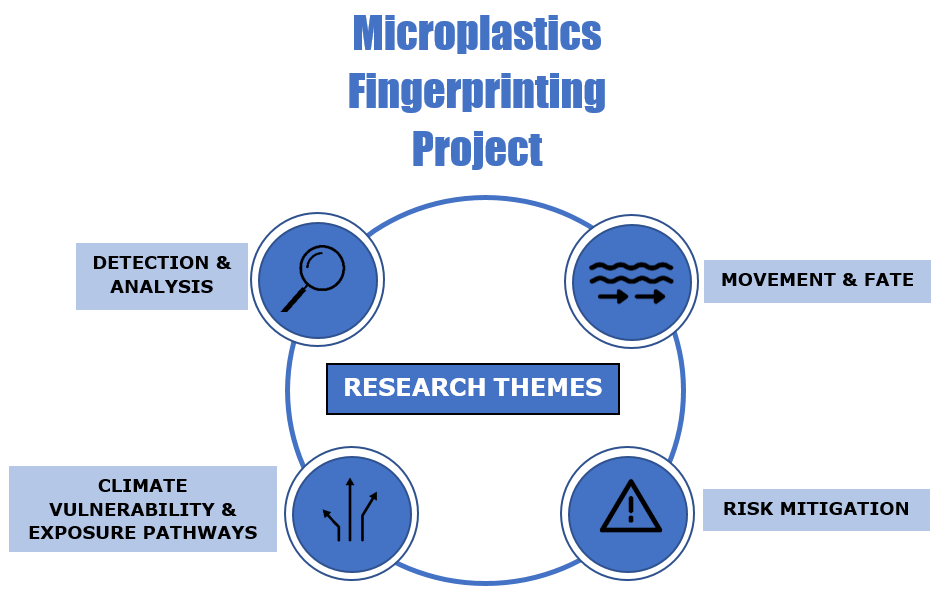Strategies that would effectively protect freshwater ecosystems and drinking water sources from microplastics pollution call for advanced scientific understanding in the detection and tracing of microplastic movement, quantification of microplastic loads and exposure risk assessments. The Microplastics Fingerprinting project is divided into four sections (or work packages). This structure enables us to directly address the four main objectives of our project:
Improve the detection and analysis of microplastics – work package 1
One challenge associated with studying microplastics is the lack tools and techniques that can be used to quickly determine the concentration, size and composition of microplastics. This significantly limits the amount of microplastic samples that can be analyzed, which makes quantifying plastic loads and determining potential impacts difficult. In this work package, we are working towards the development of a microplastics fingerprint library and methodological workflows that will make it easier and quicker to detect and analyze plastic samples.
Track the movement and fate of microplastic pollution at the watershed scale – work package 2
We currently understand very little about how microplastic material moves through watersheds. In this work package, we investigate the spatial distribution of microplastics in southern Ontario’s largest river basin, the Grand River watershed. Using predictive models, we will gain insights into where plastics are coming from and how they tend to move through the river to Lake Erie. This will help us quantify the loads of microplastics in different parts of the system including throughout the water column and in river and lake sediments.
Assessing climate vulnerability and exposure pathways to the lower Great Lakes – work package 3
We are exploring various factors that affect microplastics loads and movement through the watershed such as severe rainfall and snowmelt events, that are occurring more frequently due to climate change. This will help us monitor the changes in microplastics composition and flows from stormwater runoff. We are also analyzing sediment cores from reservoir systems in the Grand River watershed to understand temporal trends. Finally, researchers will examine microplastic loads in the raw water intakes for drinking water treatment plants, with the intention of identifying high risk exposure scenarios and to identify solutions that would minimize risks to public health.
Reducing point source inputs and develop risk mitigation strategies – work package 4
The first part of this work package involves conducting an economic analysis of (micro)plastics pollution into the Great Lakes in terms of costs and benefits. We examine how concepts such as the circular economy could be applied to help eliminate plastic waste and promote resource recovery. The second part focuses on microplastics removal from wastewater treatment effluent and urban stormwater runoff. This work will yield a detailed understanding of the effectiveness of various treatment options and support the advancement of sustainable approaches to stormwater planning and management. Finally, researchers are developing a risk mitigation approach that identifies governance structures and policy instruments that can reduce the input of harmful plastic substances at its source and implement the gradual transition to more sustainable individual and collective behavior.
